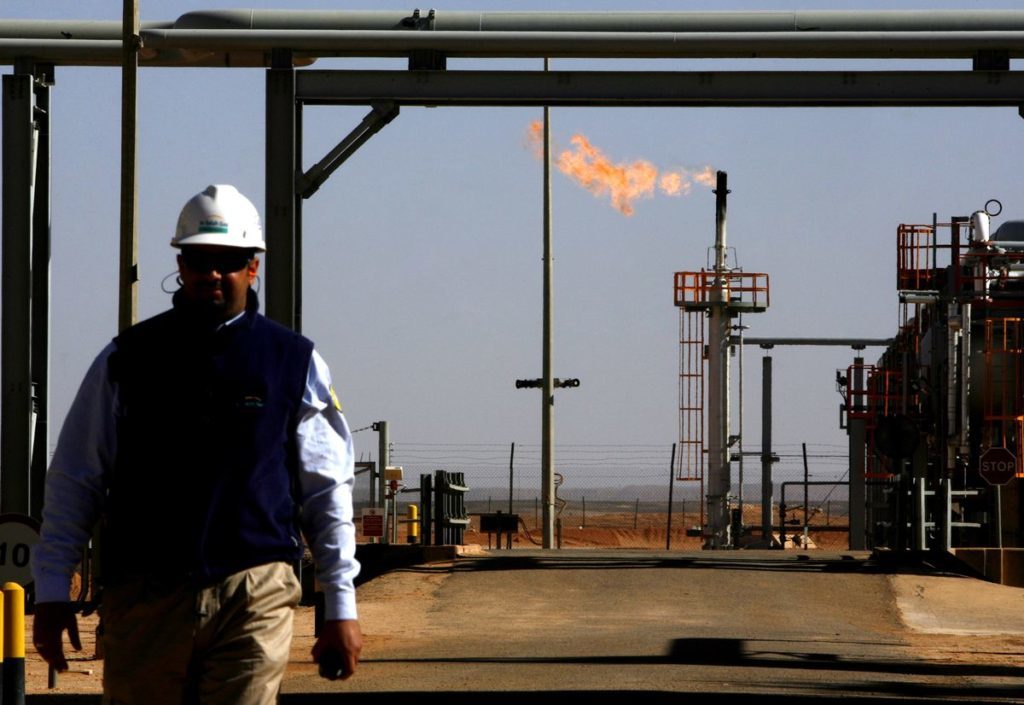
The largest listed oil and gas producers are moving in the wrong direction, according to a new report from Redburn, “Lost in Transition”.
The companies are producing more and more oil, without taking into account the mounting societal and governmental pressure to restrict warming to below 2 degrees Celsius. The longer they wait, the harder it will be to change course.
“The important point is that it doesn’t matter whether you believe the science or not. The fact is, we are now at a point where societal belief in aggregate, and in major economies, has tipped. Policy will reflect a need to meet the Paris Agreement targets,” Redburn’s Stuart Joyner told Energy Voice. After considering the pressures of the transition challenge on the sector, the brokerage has cut its recommendations for majors, downgrading Eni, BP and OMV to neutral, while double-downgrading ExxonMobil, from buy to sell. Shell and Repsol were also cut to sell. It has no buy recommendations for the majors.
There are signs that the industry is aware of the problems. BP’s CEO Bob Dudley was reported this week as saying that the company would start to sell off projects in order to meet its internal climate objectives.
Other signs cited by Joyner as indicators of change are an increase in disposals and efforts to secure shareholder support through cash distributions or buybacks. “There is more pressure to slow the pace of growth into oil and any investor looking at the sector will be aware of the higher risk involved.”
Future supplies
The sector faces near-term pressure, with over-supply into 2020, but also further out. While most forecasts expect demand to continue rising at 0.5% per year until 2040, this is unlikely to occur. On the contrary, Redburn foresees demand falling by 2% per year from 2025.
Should demand continue increasing, the effect on climate change will be dramatic and necessary cuts that much deeper. “The further we go on the current trajectory, the further we get from meeting the targets – and the more painful it will become,” Joyner said.
Majors are continuing to invest in oil production above and beyond what future demand will require. Production plans from the companies suggest output will rise by 3.5% per year to 2025. This is not matched by sufficient investment in gas and renewables.
Shifting into gas would be one of the most straightforward steps for companies to reduce their carbon intensity. This is not the only option, though. The Redburn report noted Eni’s move into reforestation, which is intended to capture 20 million tonnes per year of carbon dioxide by 2030. Other potential steps include carbon capture and storage (CCS) or investments in renewables.
The pivot to gas has been much discussed, but Redburn’s analysts are sceptical. “It’s just not happening, as a group. There’s a move into increasing LNG sales, but the ‘pivot’ is coming from the marketing of other people’s gas, rather than increasing their own production as much as oil. Looking at the carbon intensity across the portfolio, this is down only marginally,” Joyner continued. Gas made up 47% of the group’s production mix in 2018 but this is on track to fall to 42% in 2025.
Carbon intensity
Citing Equinor as an example, the analyst said the Norwegian company’s share of gas in its portfolio will fall by 12 points, to 37%, by 2025. This will be driven by new oil projects starting up, such as Johan Sverdrup. As a result of this shift, Equinor’s carbon intensity is actually increasing.
Oil investments come in the face of a “increasingly uncertain demand outlook”. There remains a need to invest in some oil projects, because of the decline rate from existing facilities, with a supply gap of 18mn barrels per day needing to be filled by 2030. The companies will still have to support the most competitive projects, but they must also move faster to diversify. “The [current] pivot is too slow,” Joyner said.
The comments from BP’s Dudley tie in with the balance of financial and environmental drivers. Giving the instance of the recent decision to sell the company’s legacy Alaskan assets, Dudley said this would reduce BP’s carbon footprint but also that the assets had been struggling to compete internally for capital.
Comments from the BP executive chime with Redburn’s note, which highlighted the importance of cost competitiveness. An offshore project with a breakeven cost of more than $50 per barrel is unlikely to be sanctioned, it said. This also appears to be the average breakeven for shale assets in the US.
Oil sands projects are likely to lose in terms of both carbon emissions and price. There may be some scope for internal offsetting of emissions – producing Alberta’s bitumen could be balanced by investments in CCS, for instance – but in general these projects are likely to lose out. Other sources that may struggle would be projects involving the flaring of associated gas, such as in Nigeria’s Niger Delta.
Funding flaws
While the Lost in Transition report was focused on Redburn’s coverage group, Joyner allowed that lessons could be applied more broadly across the industry. Perhaps the mostly highly watched oil event of the near future is the proposed IPO of Saudi Arabia’s Aramco.
The company is already working on carbon intensity metrics. During its first investor event, a conference call on the second quarter, Aramco’s management noted its production was very low in terms of carbon emissions. The consumption of that crude, though, leads to significant emissions.
The challenge facing the industry is substantial and getting larger. From Aramco’s drive for a listing to the smallest minnow, they all require outside investment. “There’s an industry-wide problem with the cost of capital,” Joyner said. “The challenge is more or less size agnostic.”
